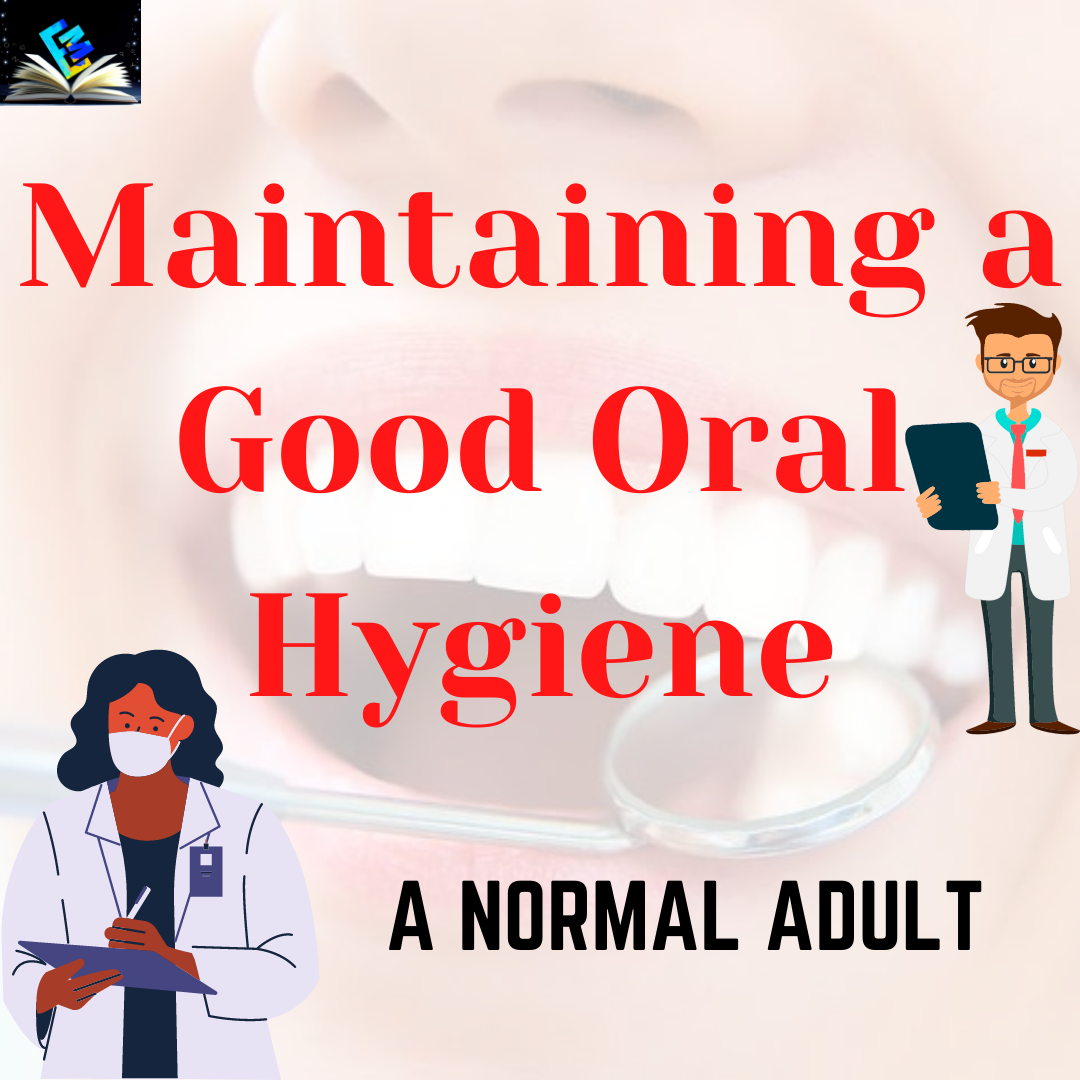
Oral Hygiene | Maintaining a Good Hygiene for a Normal Adult
AUTHOR : Dr. Saumya Lal
How to maintain good Oral Hygiene?
Maintaining good oral health is essential to maintaining good overall health. The goal of proper oral hygiene is to remove or prevent formation and buildup of plaque and tartar, to prevent dental caries and periodontal disease, and to decrease the incidence of halitosis.
Toothbrushing
- Place your toothbrush at a 45-degree angle against the gums.
- Move the brush back and forth gently in short (tooth-wide) strokes.
- Brush the outer tooth surfaces, the inner tooth surfaces, and the chewing surfaces of the teeth.
- Use the tip of the brush to clean the inside surfaces of the front teeth, using a gentle up-and down stroke
Toothpaste (Promotes Oral Hygiene)
Toothpaste is used to promote oral hygiene : It is an abrasive that aids in removing dental plaque and food from the teeth, assists in suppressing halitosis, and delivers active ingredients (most commonly fluoride) to help prevent tooth decay (dental caries) and gum disease (gingivitis)
Interdental Brush or Proxy Brush
An interdental brush is a thin round or tapered brush which consists of bristles that can easily access the interdental space between the teeth. Usually, these brushes come in a wide range of shapes and sizes to fit all types of tooth alignments
Dental Floss
Dental floss is usually made of nylon thread or folded polytetrafluoroethylene strands. It is available as waxed or unwaxed dental floss. Where teeth are crowded, interdental cleaning is easier to manage with waxed than unwaxed floss.
- Break off about 18 inches of floss and wind it around the middle fingers of each hand. Hold the floss tightly between your thumbs and forefingers.
- Guide the floss between your teeth using a gentle rubbing motion.
- When the floss reaches the gum line, curve it into a C shape against one tooth. Gently slide it into the space between the gum and the tooth.
- Bring the floss back toward the contact point between the teeth and move the floss up or down the other side, conforming the floss to the shape of the tooth.
- Hold the floss tightly against the tooth. Gently rub the side of the tooth, moving the floss away from the gum with up-and-down motions.
- Repeat this method on the rest of your teeth.
Rubber Tip
Rubber tips are effective gum stimulators that consist of a metal handle with a pointed rubber tip. Some varieties of gum stimulator may include silicone tips. The firm tip of this interdental tool helps to clean the teeth and gums by removing plaque, bacteria, and food particles
Limit Sodas, Coffee and Alcohol
Although these beverages contain a high level of phosphorous, which is a necessary mineral for a healthy mouth, too much phosphorous can deplete the body’s level of calcium. This causes dental hygiene problems such as tooth decay and gum disease. Beverages containing additives such as corn syrup and food dye can make pearly white teeth appear dull and discoloured. Therefore, it is best to choose beverages like milk, which helps strengthen teeth and build stronger enamel, giving you a healthy, beautiful smile and water, which hydrates your body longer than sugary drinks,
Consume Calcium and other Vitamins that are good for the body
You need plenty of calcium for your teeth. It is essential for the teeth as well as your bones. It is better to drink milk, fortified orange juice and to eat yogurt, broccoli, cheese, and other dairy products. You can also take a calcium supplement, taking different doses according to your age and necessity as per prescription. Calcium and Vitamin D are necessary for maintaining the health of gums and teeth. Vitamin B complex is also essential for the protection of gums and teeth from cracking and bleeding. Copper, zinc, iodine, iron and potassium are also required for maintaining healthy dental hygiene.
MOUTHWASHES
Mouthwash is not particularly necessary and not all mouthwashes are useful. Mouthwashes containing Listerine or chlorine dioxide are very helpful because they help to kill and maintain the bacteria in your mouth. It can help maintain good breath as well as help maintain strong teeth. Mouthwash cannot do all the work but if you are already brushing, flossing, visiting the dentist and eating well, mouthwash is the cherry on top that will make your dental health great.
Clean your tongue
Clean the surface of your tongue daily. By using a professional tongue cleaner, you remove countless bacteria that otherwise live, particularly on the rougher top surface of your tongue. These can contribute to bad breath (halitosis) and negatively affect your dental health.
Visit Your Dentist
You should visit your dentist at least twice a year to have a full hygiene treatment performed. Also at these appointments, a comprehensive exam is taken with x-rays to help detect and prevent future dental treatments from occurring.
FOR MORE INFORMATION VISIT OUR SITE






